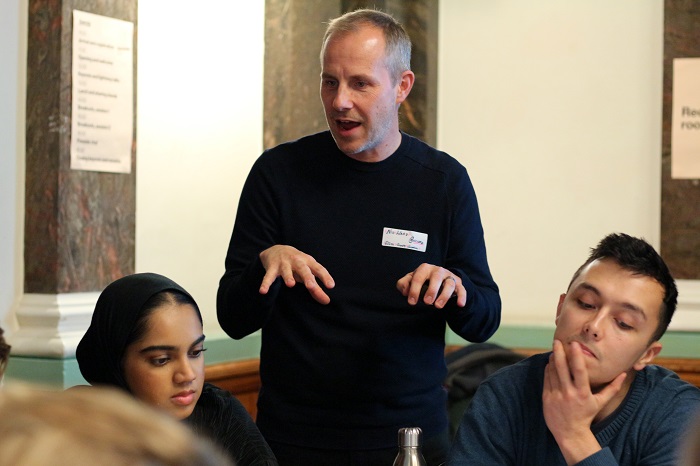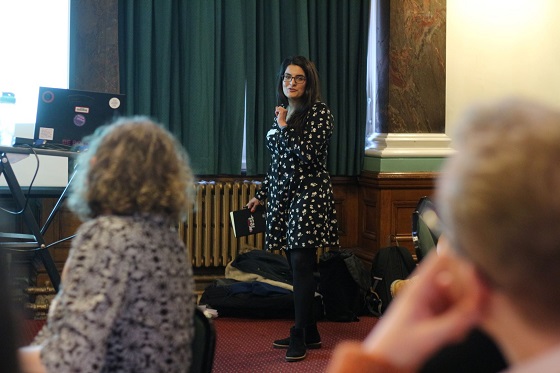Last week we took part in the local #govdesign event hosted by Birmingham City Council. We were asked to contribute a session to the day and were excited to share our experiences and learn from others.
The day started with a keynote and some lightning talks from digital and design teams across the UK local government. It was great to hear from those working for other councils that are on a similar journey, experiencing similar challenges and talking about the things they are learning.
‘There has to be a better way’
After hearing three or four similar stories it became impossible to ignore all the similarities. We saw website projects delivered in agile ways using shared codebases. Prototypes of Adult Social Care (ASC) services that we are also working on. Calls for more collaboration but at a scale that could be managed by constrained teams.
We heard lot of the same language that we use to describe how hard it is to embed a user-centred design approach in a big, bureaucratic organisation. You couldn’t help but think ‘there has to be a better way’.
It’s great to celebrate the real sense of momentum that appears to be continuing to build around local gov user-centred service design. Balancing our internal priorities against the benefits of wider collaboration, however, is one common design problem that we haven’t cracked yet.

Sharing our journey so far
In the afternoon we delivered a session about creating the conditions for service design at Essex County Council. The reception room was packed. We started by sharing a few maps to help people understand the geography that we work in. We talked about the complex tiered relationships and boundary-spanning partnership arrangements that add so much complexity to the work we do.
We then talked about our journey from being a new digital team to becoming a service design team. What our roles are and how we think the team might evolve in the future.
Moving onto some of the things we’re learning, we shared a framework which helps us think about the essential work that we need to do at different ‘levels’. It’s helping us to build organisational maturity while we deliver some of the ambitions of our organisation. We’ll share more about this in a separate blog post.
Exploring the problem
Then we got into the fun stuff. We wanted attendees to explore common local government design challenges and share their experiences and reflections.
To get everyone in the mood, we used some examples of the types of work requests that we regularly receive. Many of these resonated with attendees if wry smiles and resigned head-shaking are fair measures.
We shared four of the things that must be in place for us to do our best work. We call them the prerequisites for successful service design. These are things we have learned are most important to keep on track. They are:
- Focus on the problem and the outcome you are looking for – remain open-minded to the solution
- Be present - make the time to regularly engage and steer the work, free up the right people to actively participate
- Help the service design team to understand governance, relationships and partnership arrangements early
- Expect to do things differently – accept that at times it might feel ambiguous and a little uncomfortable
These and other prerequisites are the basis of a ‘diagnostic’ approach that we are developing. This will ensure that we have the right (and sometimes hard) conversations at the outset.
Then it was time to get active. We had prepared a series of problems statements and ‘how might we’ questions. These were based on the four prerequisites. We asked groups to work together to reflect on their experiences and capture their ideas and reflections.

Emerging themes: common challenges and needs
After some lively conversations we looked at the notes for the common themes. Many of the comments focused on the importance of good, clear communication and the importance of setting the right expectations at the outset. Others themes emerged including:
- the need to recognise moments of ambiguity in the design process and take the time to build trust with stakeholders
- the need to empower service experts by clearly defining roles and responsibilities. The value of involving them in user research so that they can see first-hand how people respond
- the power of good storytelling to help share what we learn across organisations and within the wider design community
- the importance of sharing stories of success and case studies that demonstrate a return on investment (ROI) from user-centred design work
Supporting collaboration
We felt really energised after the workshop and reflected on the day as we travelled back to Essex.
It was great for the central #govdesign community to focus on local government. To share our wisdom and our woes and see how our story resonated with so many others. But the challenge of making the time to share and engage others in our work remains.
Which got us thinking. Most of the recent activity focused on convening better collaborative projects across local government authorities. There’s also work ongoing to improve the pipeline tool which will enable organisations to share projects they are working on.
Is there a role for central government teams to help curate case studies from across local government and highlight the business case/ROI for successful projects? Would stories of financial savings and organisational redesign in one organisation help others to be more ambitious in their thinking and unlock more time for collaboration?
The ongoing challenge and what we can do now
The power of storytelling came across all the problem statements. The challenge is to take time to share the successes of our work against the pressures of the day job and the increasing demand for design work.
There are such similarities in our work from website development that there is merit to finding better ways to work together to collaborate, share and learn. We must think carefully about how we capture our successes and ensure that these are transferable. This way we can all benefit as a community of designers and design-minded people.
So now it is over to you for ideas on how might we collaborate and share our learnings in design projects much earlier?
Leave a comment